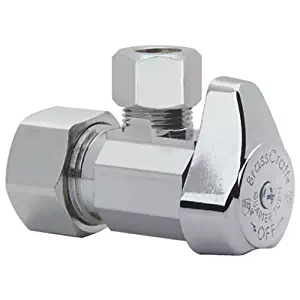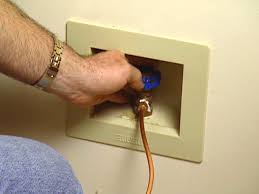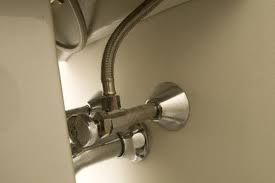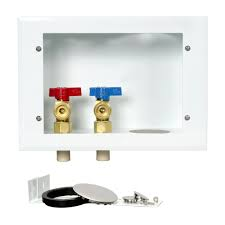This is a guest post written by John Crow, the CEO of Centurion Investments.
A Maintenance checklist is a great tool to:
- Ensure simple fixes are addressed
- Establish a maintenance requirements list
- Record any home warranties and product warranty information
- Schedule maintenance tasks
- Provide a framework for your tenant on things he/she will maintain in accordance with the lease agreement.
- Keep your property value high
- Stay out of trouble with an HOA or Municipal Authority
A Preventative Maintenance Case Study
To illustrate the need for a checklist, consider the epic tale of this real life Landlord, who shall hereto bear the moniker of Jim. Jim was a great Landlord and always tried to do everything possible to keep his tenants happy, and make sure everything was working properly on his rental homes. He was even known to occasionally drive by the properties just to clean the gutters.
In all of the years he worked with his property management company, he only had one disagreement over a very minor expense. Jim ultimately decided to cut a corner, but his decision to cut a little corner would lead to big problems. What was the little corner you ask? It was this.
It’s called an angle stop, which should not be confused with an Angel stop (dad humor). These little devils go for $8.00 on Amazon. They are installed all over a rental property and connect the water lines to the appliances and fixtures like; refrigerators, sinks, toilets, and washing machines.
It’s a really good idea to check them on a regular basis and or replace them between tenants. The problem is angle stops are sneaky. They hide behind appliances, under toilets, and inside cabinets. They frequently fail every few years resulting in either a slow leak or an all out gusher.
Either way, tenants often ignore the signs of water problems. On occasion they’ll even ignore a pool of water caused by a leak until major water damage develops, dry wall and or flooring is destroyed, and mold has established itself.
As you might have guessed this very thing happened to he who shall be called Jim. You see, after a long-time tenant vacated one of his properties, a preventative maintenance check was performed by Jim’s extraordinary Property Manager.
During the inspection, this highly trained professional noticed several angles stops were beyond their useful life and were at risk of failure. As such he promptly documented the issue on his inspection checklist, reported the issue to Jim and ordered a repair request quote.
Jim denied the request to replace the aforementioned parts with the quip, “Don’t Fix What Ain’t Broke”. Jim saved $8.00 that day but the resulting water damage claim exceeded his deductible by several thousand dollars. The rest, shall we say history, or as they say in the insurance industry, CLAIMS HISTORY!
Now, I get it, the last thing on your mind when a tenant moves out or renews his lease is the angle stops right? That’s exactly why you need a checklist. If you use a repair checklist you’ll never miss another detail so simple but mission critical as an angle stop.
How to change an angle stop in a rental property?
A rental property maintenance checklist should include:
- An itemization of all of the major working systems of the home like, Electric, Plumbing, Roofing, Hvac system, and septic systems
- It should consider the major appliances like the water heater, pool equipment, stove, oven, microwave, dishwasher, water softener, and basement sump pumps
- It should be organized in a way that breaks out the more aesthetic features like exterior and interior condition of the paint on ceilings walls and eves.
- It should have a section on safety equipment like fire alarms, security systems, carbon monoxide detectors, and attic and basement escape ladders.
- It should include climate considerations like the need to deal with clogged gutters, changing air filters, snow melt etc. (a plan to avoid maintenance issues)
Too busy to utilize a rental property maintenance checklist?
It’s totally understandable and more common than not among rental property owners. While the considerations of property investing are enormous, the reality is that the owners are often either gainfully employed individuals with pressing schedules and families, or retired professionals with other priorities. So how should an investor spend their time?
Optimal Property Investor Time Management
- Establishing Tax strategy like Depreciation and when to 1031 Exchange
- Analyzing the Return on Investment
- Analyzing cash flow
- Driving Cap rates
- Assessing Equity Gain
- Formulating market valuations and sales timing strategy
- Determining leverage strategy for new acquisitions
Poor Use of Investor Time
- Handling tenant calls
- Placing ads on craigslist
- Coordinating vendor repairs
- Paying vendor bills
- Collecting rent
- Interviewing applicants
- Tenant Screening
- Inspecting rental properties
Time To Hire A Property Manager?
Managing a rental property is challenging, but if done well, it’s a great way to create income, and build wealth in a relatively low tax environment. If managing a rental home is like conducting an orchestra, rental property maintenance is the guy sweeping up the popcorn after the show. Nobody pays attention to him, but things go bad quick if he’s not there. Okay, Okay, maybe popcorn and orchestra recital aren’t synonymous, but you get the point.
If there are portions of the property management process that exceed the time you can allocate to solving them, it’s time to hire a property manager.
#RealEstateInvestment #RealEstateInvesting #PropertyManagers
In his current capacity, John Crow leads a suite of real estate related companies. Century 21 Northwest, a full service realty company, The Location Pro, a Commercial Real Estate Sales and Investment division, and Century 21 Property Management, a residential rental management division.
Gary Lucido is the President of Lucid Realty, the Chicago area’s full service real estate brokerage that offers home buyer rebates and discount commissions. If you want to keep up to date on the Chicago real estate market or get an insider’s view of the seamy underbelly of the real estate industry you can Subscribe to Getting Real by Email using the form below. Please be sure to verify your email address when you receive the verification notice.



